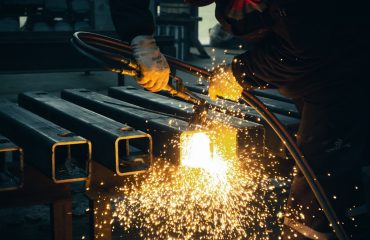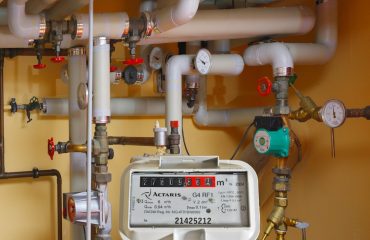Liquefied Natural Gas (LNG) pipelines represent a crucial component of the global energy infrastructure, enabling the safe and efficient transportation of this vital resource. However, the unique challenges presented by transporting cryogenic fluids necessitate stringent specifications for pipeline design, construction, and operation. This comprehensive guide delves into the key aspects of LNG pipeline specifications, providing a detailed understanding of the complexities involved.
1. Material Selection: The Foundation of Cryogenic Resilience
The choice of materials for LNG pipelines is paramount due to the extremely low temperatures (-162°C) involved. Standard steel pipelines are unsuitable due to the risk of brittle fracture at such low temperatures. Therefore, specialized materials with exceptional cryogenic properties are employed. These include:
- Austenitic Stainless Steels: These steels possess a face-centered cubic crystal structure that maintains ductility and toughness even at cryogenic temperatures. Grades like 304L, 316L, and 9% Ni steel are commonly used.
- Nickel Alloys: Alloys like Incoloy and Inconel offer superior strength and corrosion resistance at cryogenic temperatures, making them suitable for high-pressure applications.
- Aluminum Alloys: Certain aluminum alloys exhibit excellent cryogenic properties and are lighter than steel, potentially reducing construction costs in specific applications. However, their susceptibility to stress corrosion cracking needs careful consideration.
The selection of specific materials often depends on factors such as pipeline diameter, operating pressure, soil conditions, and the overall cost-benefit analysis.
2. Pressure Rating and Wall Thickness: Ensuring Safe Operation
LNG pipelines operate under significant pressure to maintain the liquefied state of the gas. The pressure rating, expressed in bars or psi, dictates the maximum allowable operating pressure. This rating is determined by several factors, including:
- Pipeline Diameter: Larger diameter pipelines generally require thicker walls to withstand the same pressure.
- Material Properties: The yield strength and ultimate tensile strength of the chosen material directly influence the allowable pressure.
- Operating Temperature: The low temperature of LNG affects the material’s properties, requiring adjustments to the pressure rating calculations.
- Safety Factor: A substantial safety factor is incorporated to account for uncertainties and potential variations in operating conditions.
Accurate calculation of wall thickness is critical to ensure the pipeline can safely withstand the operating pressure without compromising its structural integrity. Specialized software and rigorous engineering analysis are employed for this purpose.
3. Pipeline Construction and Welding: Precision and Quality Control
The construction of LNG pipelines demands meticulous attention to detail and stringent quality control measures. Welding is a crucial aspect, requiring highly skilled welders and advanced welding techniques. The following are essential considerations:
- Welding Procedures: Specialized welding techniques, such as Gas Tungsten Arc Welding (GTAW) or Gas Metal Arc Welding (GMAW), are employed to ensure high-quality welds with minimal defects.
- Non-Destructive Testing (NDT): Rigorous NDT methods, including radiographic testing, ultrasonic testing, and magnetic particle testing, are used to detect any flaws in the welds or base material.
- Quality Control Procedures: Stringent quality control procedures are implemented throughout the construction process, ensuring compliance with relevant standards and specifications.
- Coating and Protection: External coatings are applied to protect the pipeline from corrosion and environmental factors. Cathodic protection systems may also be implemented to further enhance corrosion resistance.
Any deviation from specified procedures can compromise the integrity of the pipeline and lead to potentially catastrophic consequences.
4. Safety Features and Emergency Shutdown Systems: Mitigation of Risks
Given the hazardous nature of LNG, comprehensive safety features are incorporated into the pipeline design and operation. These include:
- Pressure Relief Valves: These valves automatically release excess pressure to prevent pipeline rupture in case of overpressure events.
- Emergency Shutdown Systems (ESD): ESD systems are designed to rapidly shut down the pipeline in case of emergencies, such as leaks or equipment malfunctions.
- Leak Detection Systems: Sophisticated leak detection systems continuously monitor the pipeline for leaks, providing early warning of potential problems.
- Pipeline Monitoring and Control Systems: Remote monitoring and control systems allow operators to track pipeline performance and respond to any anomalies in real-time.
- Pigging Systems: Pigging systems use specialized devices to clean and inspect the pipeline’s interior, removing debris and detecting internal corrosion.
The integration of robust safety features is crucial for minimizing the risk of accidents and protecting both the environment and human life.
5. Environmental Considerations and Regulatory Compliance: Sustainable Practices
The construction and operation of LNG pipelines must adhere to stringent environmental regulations and sustainability principles. Key considerations include:
- Minimizing Environmental Impact: Careful route planning and construction techniques are employed to minimize disruption to ecosystems and habitats.
- Greenhouse Gas Emissions: Efforts are made to reduce greenhouse gas emissions associated with the pipeline’s construction and operation.
- Water Resource Management: Sustainable water management practices are implemented to minimize water consumption and protect water resources.
- Regulatory Compliance: Adherence to all relevant environmental regulations and permits is essential throughout the project lifecycle.
- Community Engagement: Engaging with local communities and addressing their concerns is crucial for ensuring the project’s social license to operate.
The long-term sustainability of LNG transportation depends on responsible environmental practices and a commitment to minimizing the project’s ecological footprint.
In conclusion, the specifications for LNG pipelines are complex and demanding, reflecting the unique challenges presented by transporting cryogenic fluids. A thorough understanding of these specifications is crucial for ensuring the safe, efficient, and sustainable transportation of this vital energy resource.
SEO Tags:
- LNG Pipeline Specifications
- Cryogenic Pipeline Design
- LNG Transportation Safety
- Pipeline Material Selection
- LNG Pipeline Regulations




